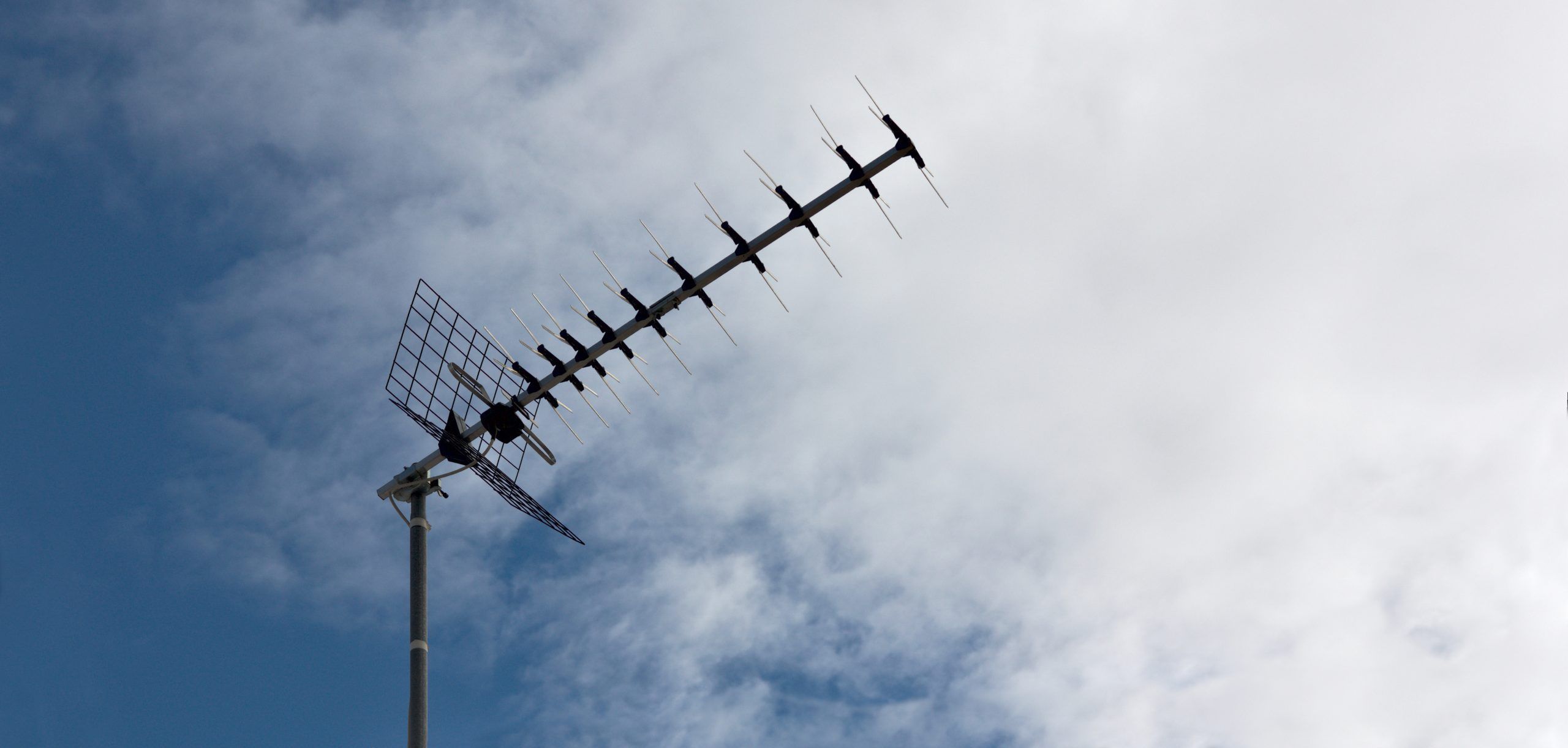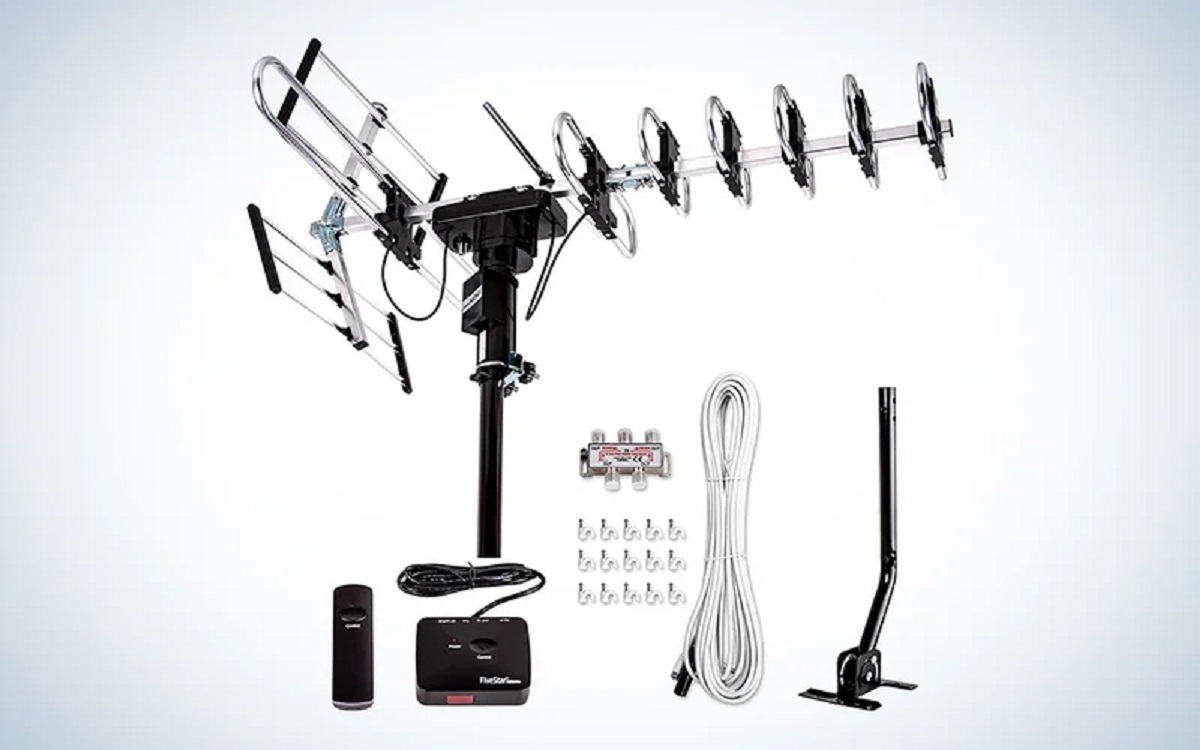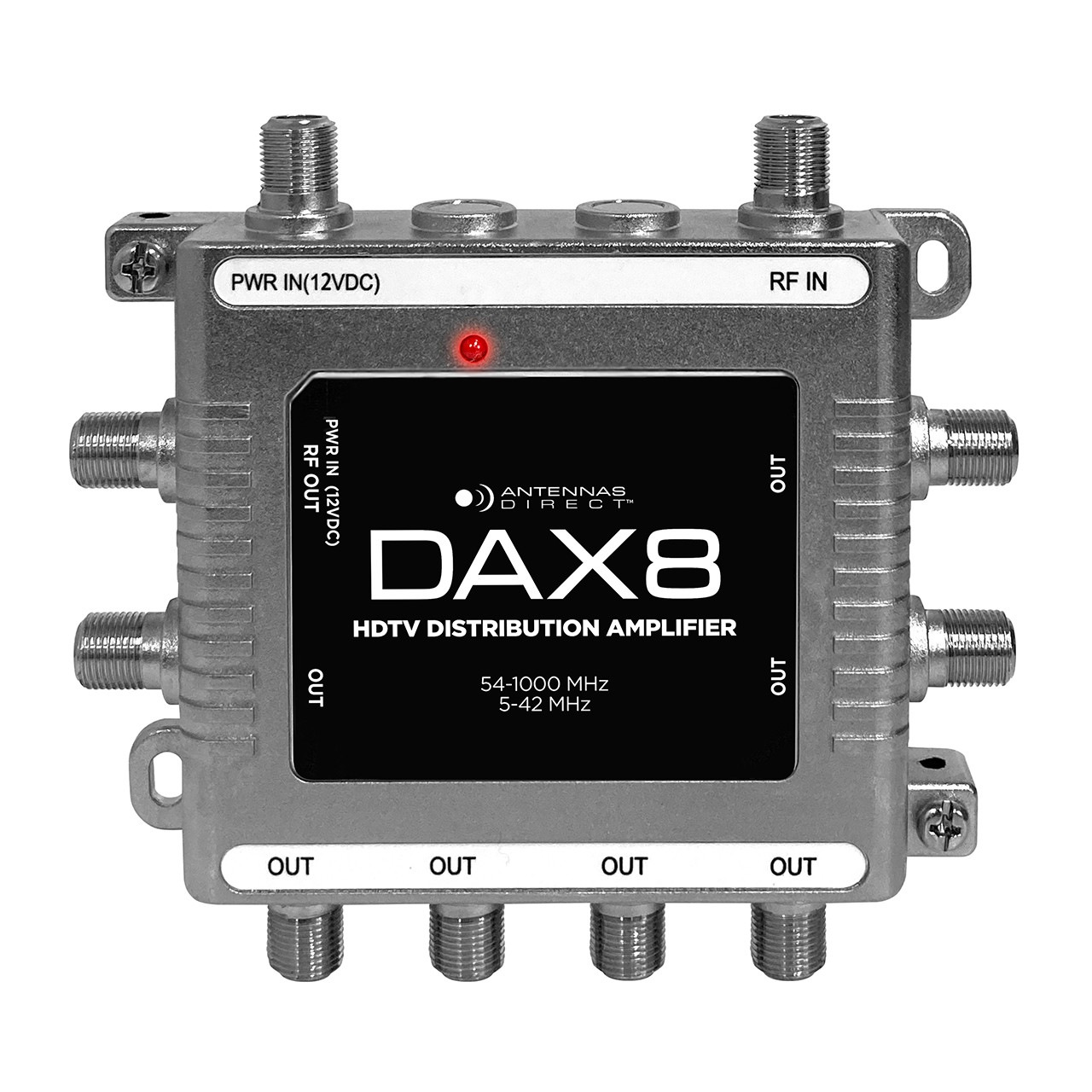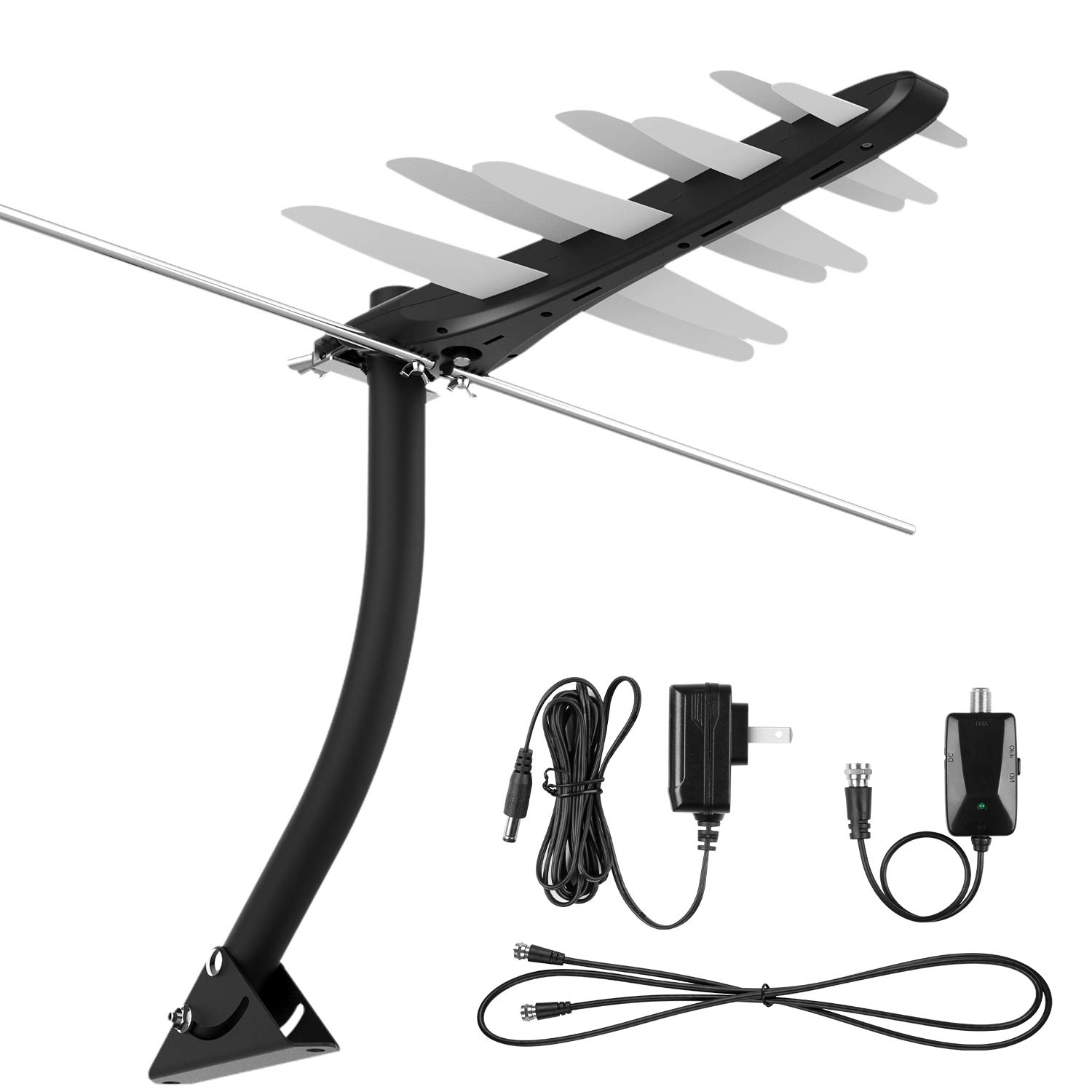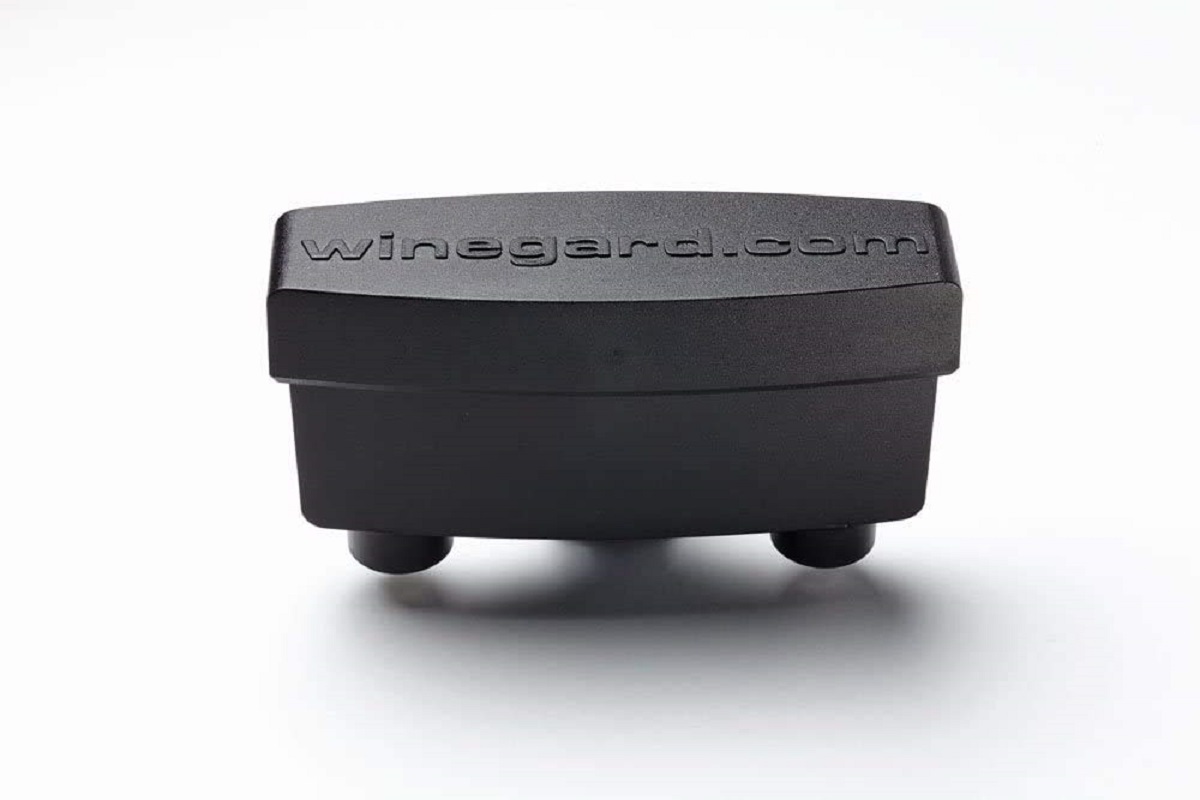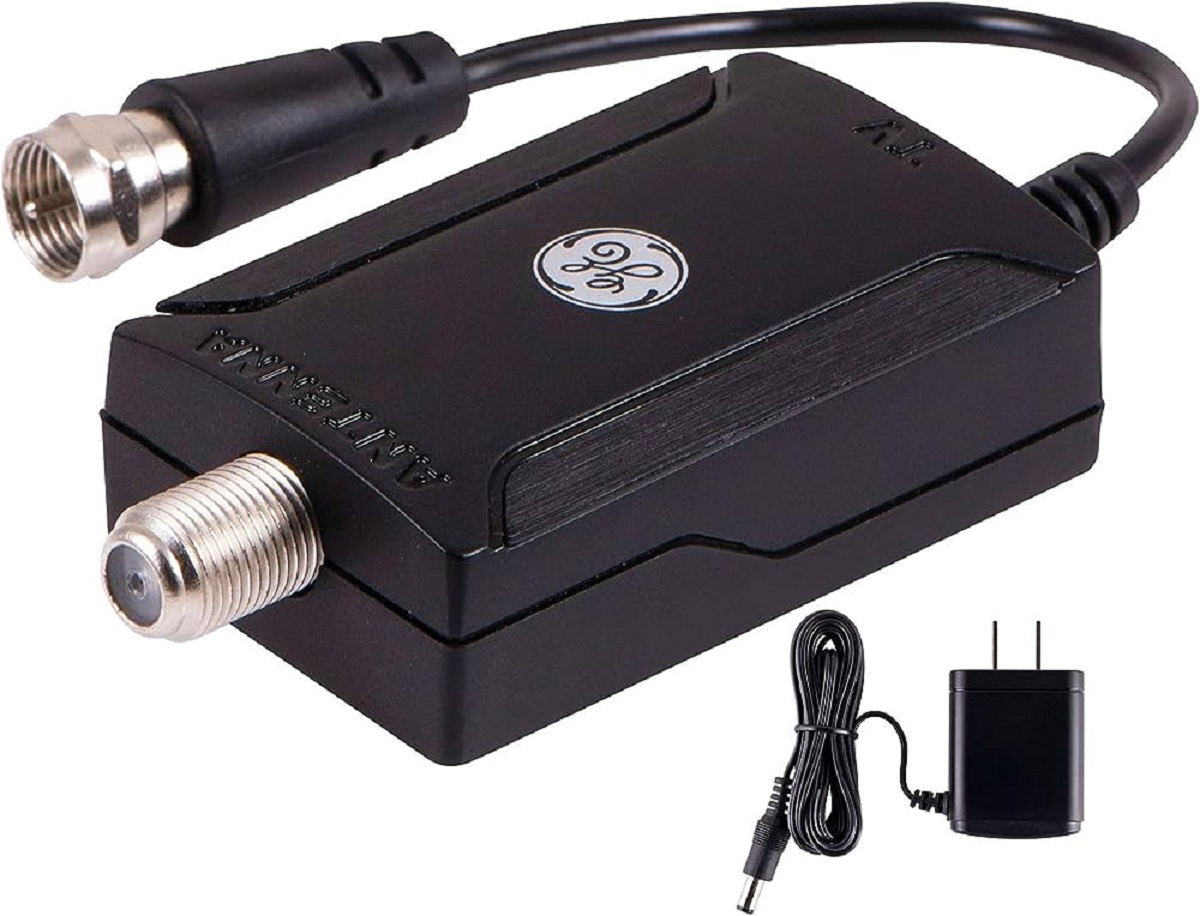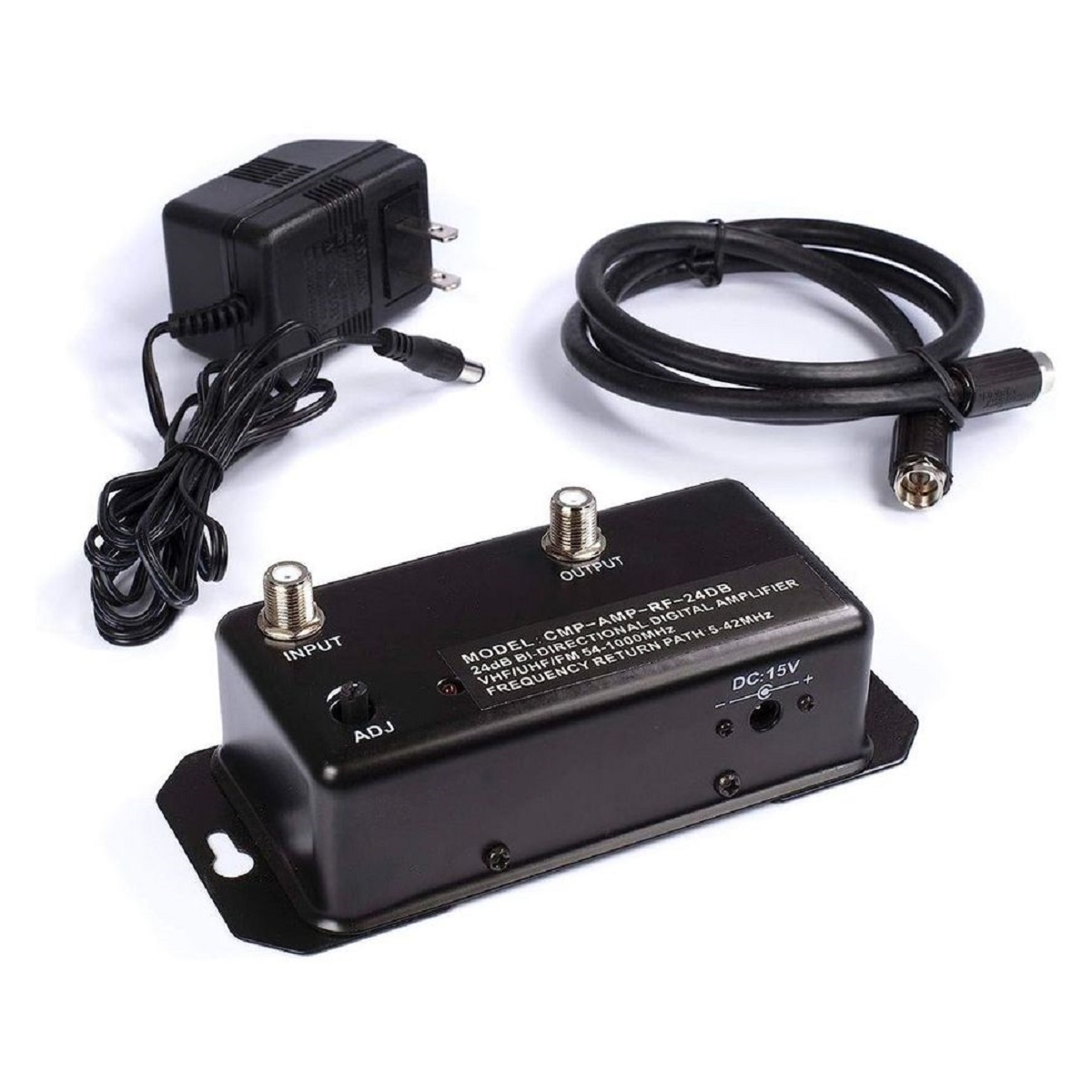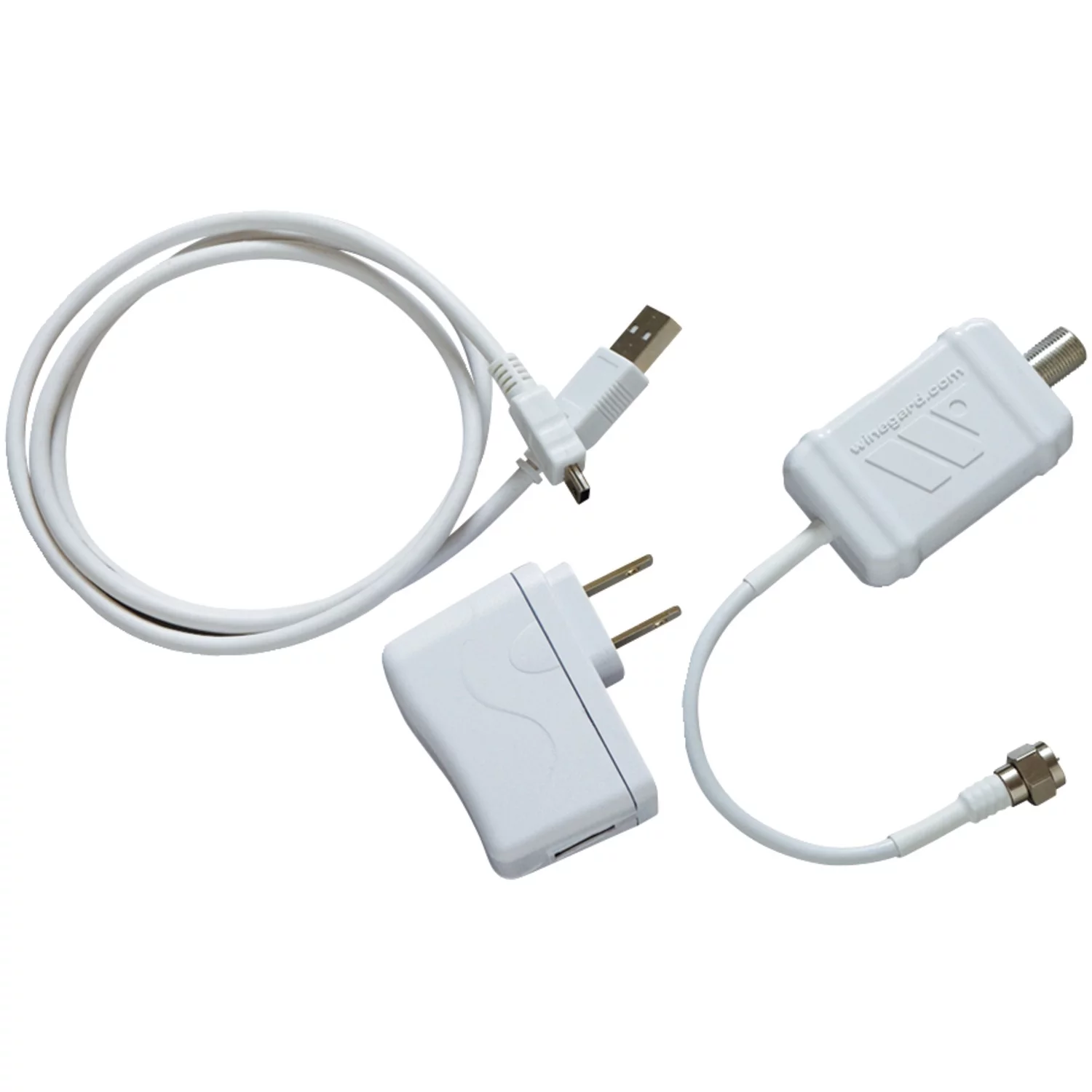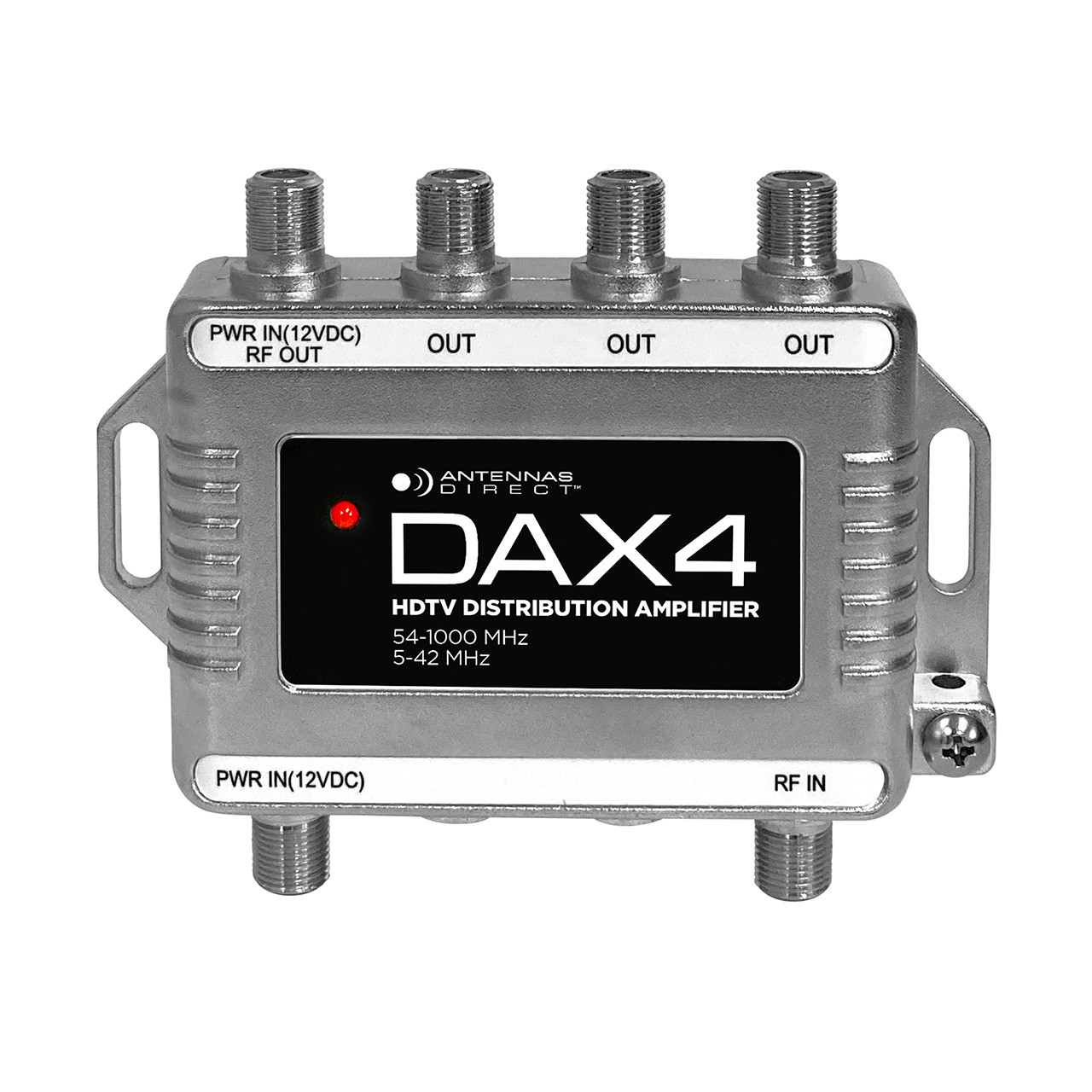What Is Gain On A TV Antenna
When it comes to TV antennas, you may have come across the term “gain”. But what does it actually mean? In simple terms, gain refers to the antenna’s ability to receive signals from TV stations. It measures the antenna’s ability to focus and capture electromagnetic waves effectively.
TV antenna gain is usually measured in decibels (dB). The higher the gain, the better the antenna is at receiving signals and providing clearer reception. Antennas with higher gain are especially useful in areas with weak signal strength or when TV stations are located far away.
Gain is an essential factor to consider when choosing a TV antenna. It ensures that you can receive the maximum number of channels available in your area and enjoy excellent picture and sound quality. However, it’s important to note that higher gain doesn’t necessarily mean better reception in all cases. The appropriate gain for your TV antenna depends on various factors, including your location, distance from TV transmitters, terrain, and potential obstructions.
Antenna gain is categorized into two types: “high gain” and “medium gain”. High gain antennas have a higher dB rating and are ideal for areas with weak signal strength or when TV transmitters are far away. On the other hand, medium gain antennas are suitable for areas with moderate signal strength or when TV transmitters are relatively closer.
To determine the right antenna gain for your TV, consider factors such as your distance from TV transmitters and the terrain surrounding your location. You can use online tools or consult a professional to assess these factors and recommend an antenna with the appropriate gain.
Improving TV antenna gain can enhance your TV viewing experience. Here are a few tips:
- Position the antenna at the highest point possible to minimize obstructions and maximize signal reception.
- Ensure that the antenna is properly aligned towards the TV transmitters.
- Use high-quality coaxial cables to connect the antenna to your TV for optimal signal transmission.
- Consider installing a signal amplifier or booster to strengthen weak signals.
- Regularly check and adjust your antenna to optimize its performance.
By understanding what gain is and how it affects TV reception, you can make an informed decision when selecting a TV antenna. Take the time to assess your location, consider the gain options, and follow the tips mentioned above to improve your TV signal reception and enjoy a better viewing experience.
Understanding the Basics of TV Antenna Gain
TV antenna gain is a fundamental concept to grasp when it comes to optimizing your TV signal reception. In simple terms, gain refers to the antenna’s ability to capture and amplify signals from TV stations. The higher the gain, the stronger the signal that can be received by the antenna.
Gain is measured in decibels (dB) and indicates the antenna’s ability to focus and collect radio waves. It is crucial to understand that gain alone does not improve the quality of the received signal. Rather, it determines how effectively an antenna can capture and utilize the available signal.
Antenna gain is influenced by various factors, such as the design and construction of the antenna. Different types of antennas have different gain characteristics, depending on factors such as size, shape, and the presence of amplifiers or reflectors.
When considering antenna gain, it is important to take into account the trade-off between gain and directionality. Directional antennas, often referred to as high-gain antennas, are designed to pick up signals from a specific direction. They provide a stronger signal in that direction but may have a narrower coverage area. On the other hand, omnidirectional antennas have a lower gain, but they receive signals from multiple directions, allowing for wider coverage.
Another crucial factor to consider is the signal-to-noise ratio (SNR). SNR measures the strength of the signal compared to the surrounding noise. A higher SNR indicates a higher-quality signal with less interference, resulting in a clearer TV reception.
It’s worth noting that gain is not the only factor that affects TV reception. Other environmental factors, such as terrain, distance from TV transmitters, and the presence of obstacles like buildings or trees, can also impact signal strength. These factors must be taken into account when selecting an antenna with the appropriate gain for your specific location.
Understanding the basics of TV antenna gain is essential for optimizing the performance of your TV setup. By considering factors such as antenna design, directionality, and SNR, you can make an informed decision when selecting an antenna that suits your needs. Remember to also consider external factors that may affect reception and take appropriate measures to improve signal strength.
How Does Gain Affect TV Reception
Gain plays a significant role in determining the quality of TV reception. The gain of a TV antenna directly affects the strength of the received signal, which ultimately translates into clearer and more reliable TV reception. Understanding how gain affects TV reception can help you make informed decisions when selecting and optimizing your antenna.
When it comes to TV reception, a higher gain antenna leads to a stronger signal. This means that the antenna can receive signals from TV stations that are farther away or have lower signal strength. In areas with weak signal coverage or when TV transmitters are located far away, a higher gain antenna can significantly improve the reception quality.
On the other hand, it is important to note that a higher gain antenna may also be more directional. This means that it is designed to focus on signals coming from a specific direction. While this can be advantageous in some cases, such as when you want to target signals from a particular TV transmitter, it may result in a narrower coverage area. If the transmitter is in a different direction from your antenna, the signal reception may be weaker.
Conversely, a lower gain antenna, sometimes referred to as a medium gain or omnidirectional antenna, has a wider coverage angle. This type of antenna can receive signals from multiple directions, making it suitable for areas where TV transmitters are located in different directions. However, lower gain antennas may struggle in areas with weaker or more distant TV signals.
It’s important to find the right balance between gain and coverage area for your specific situation. If you live in an urban area with strong TV signals and signals coming from different directions, a lower gain omnidirectional antenna may be more suitable. In contrast, if you live in a rural area with weaker signals or signals coming from a specific direction, a higher gain directional antenna can offer better reception.
When optimizing your TV reception, factors such as distance from TV transmitters, terrain, and potential obstructions should also be considered. In some cases, using a signal amplifier or booster in conjunction with the appropriate gain antenna can further enhance reception.
By understanding how gain affects TV reception, you can make informed decisions when selecting the right antenna for your specific needs. Balance factors like signal strength, directionality, and coverage area, and if necessary, utilize amplifiers or boosters to optimize your TV reception and enjoy a superior viewing experience.
Factors Influencing Antenna Gain
The gain of a TV antenna is influenced by various factors that can significantly impact its performance. Understanding these factors is crucial when selecting an antenna that best suits your needs and optimizing your TV reception. Here are some key factors that influence antenna gain:
Antenna Design: The design of the antenna itself has a major impact on its gain. Different antenna designs, such as Yagi, log-periodic, or panel antennas, have varying gain characteristics. Certain designs may be more suitable for specific applications or environments, depending on factors like signal directionality and coverage range.
Size and Shape: The size and shape of an antenna can affect its gain. Generally, larger antennas tend to have higher gain, as they capture a larger portion of the incoming signals. However, it’s important to strike a balance between size, gain, and practicality. In some cases, smaller antennas with moderate gain may be more suitable for certain situations or constraints.
Reflector Elements: Some antennas incorporate reflector elements, such as metal plates or grids, to enhance gain. These reflectors help redirect and focus incoming signals towards the active elements of the antenna, increasing its gain. The size and shape of these reflectors contribute to the overall gain performance.
Amplification: Amplifiers, also known as preamplifiers or signal boosters, are used to increase the gain of an antenna. These devices are typically placed near the antenna to amplify weak signals before they are transmitted to the TV. While amplifiers can improve gain, it’s important to use them judiciously and avoid overpowering the signal, as this can lead to distortions or interference.
Frequency Range: Different antennas are designed to operate within specific frequency ranges. The gain of an antenna can vary depending on the frequency or range it is optimized for. It’s important to choose an antenna that matches the frequency range of the TV signals in your area to achieve optimal gain for those specific frequencies.
External Factors: Various external factors can also impact antenna gain. These include the distance from TV transmitters, terrain, and obstructions like buildings, trees, or other structures. Environmental conditions such as weather, electromagnetic interference, and electrical noise can also affect signal strength and, consequently, antenna gain.
When selecting an antenna, consider these factors and evaluate their relevance to your specific location and requirements. It’s also worth consulting with professionals or using online resources to determine the appropriate gain and optimal antenna design for your specific situation. By understanding the factors influencing antenna gain, you can make informed decisions and maximize your TV reception performance.
Different Types of Antenna Gain
When it comes to TV antennas, there are different types of gain to consider. Understanding these types can help you choose the right antenna that suits your specific needs and optimizes your TV reception. Here are the main types of antenna gain:
High Gain: High gain antennas are designed to capture signals from a specific direction with maximum efficiency. These antennas have a narrower beamwidth, allowing them to focus on signals coming from a particular TV transmitter. High gain antennas are ideal for areas where TV stations are located in one direction or when there are obstacles blocking signals from other directions. They provide excellent signal reception and are especially useful in areas with weak signal coverage or when TV transmitters are far away.
Medium Gain: Medium gain antennas, also known as medium directional or multi-directional antennas, have a moderate amount of gain. These antennas offer a balance between gain and coverage area. They are designed to receive signals from multiple directions, providing a wider coverage range compared to high gain antennas. Medium gain antennas are suitable for areas with moderate signal strength or when TV transmitters are located in different directions. They are also commonly used in urban areas where signals can come from various directions.
Omnidirectional Gain: Omnidirectional antennas have a lower gain but provide 360-degree coverage. These antennas are designed to receive signals from all directions, making them suitable for situations where TV transmitters are scattered in different directions or when you need to capture signals coming from multiple sources. Omnidirectional antennas are commonly used in urban or suburban areas where signals can come from various locations.
Adjustable Gain: Some antennas come with adjustable gain features. These antennas allow you to set the gain level according to your specific requirements. Adjustable gain antennas provide flexibility in optimizing signal reception based on factors such as the distance from TV transmitters, signal strength, and terrain.
It’s important to note that the appropriate type of antenna gain for your TV setup depends on various factors, including your location, distance from TV transmitters, and potential obstructions. Consider the signal strength in your area, the directions from which signals are coming, and your specific requirements to select the right antenna type and gain level.
When choosing an antenna, consult with professionals or use online resources to determine the best type of antenna gain for your specific situation. By understanding the different types of antenna gain, you can make an informed decision and select an antenna that provides optimal signal reception and enhances your TV viewing experience.
Choosing the Right Antenna Gain for Your TV
When selecting a TV antenna, it’s essential to choose the right antenna gain to ensure optimal TV reception. The appropriate gain depends on various factors, including your location, distance from TV transmitters, and potential obstructions. Consider the following factors when choosing the right antenna gain for your TV:
Signal Strength: Assess the signal strength in your area. If you live in an area with strong signal coverage, a medium gain or omnidirectional antenna may be sufficient to capture signals from multiple directions. However, if your area has weak signal strength, especially if the TV transmitters are far away, a high gain antenna is recommended to improve reception quality.
Distance to TV Transmitters: Consider the distance between your location and the TV transmitters. If the transmitters are relatively close, a medium gain antenna should suffice. However, if they are far away, a high gain antenna with a narrower beamwidth can help capture signals more effectively.
Terrain and Obstructions: Evaluate the terrain and potential obstructions in your area that may affect TV reception. For example, if there are tall buildings, mountains, or dense foliage blocking signals from certain directions, a higher gain antenna may be required to overcome the obstacles and receive signals more efficiently.
Directionality: Determine whether you need a directional or an omnidirectional antenna. If the TV transmitters are located in a specific direction, a high gain directional antenna can provide better reception by focusing on signals from that direction. On the other hand, if the transmitters are scattered in different directions, an omnidirectional or medium gain antenna would be more suitable to capture signals from multiple sources.
Consult Experts: If you’re unsure about the appropriate antenna gain for your location, it’s recommended to consult with professionals or experts. They can evaluate factors such as signal strength, terrain, and potential obstructions to recommend the right antenna gain for your specific needs.
Consider Adjustable Gain: If you want flexibility in optimizing your TV reception, consider choosing an antenna with adjustable gain. These antennas allow you to adjust the gain level according to the signal strength and distance from TV transmitters, providing you with the ability to fine-tune your reception quality.
By considering these factors and taking into account your specific requirements, you can choose the right antenna gain for your TV. Take the time to assess signal strength, distance, terrain, and directionality, and consult with experts if needed. Selecting the appropriate antenna gain will ensure that you enjoy optimal TV reception and a superior viewing experience.
Tips for Improving TV Antenna Gain
Improving TV antenna gain can enhance your TV viewing experience by ensuring better signal reception and clearer picture quality. Here are some useful tips to help you boost your antenna gain:
- Position the Antenna: Proper placement of the antenna is crucial. Position it at the highest point possible, such as on the roof or in an attic, to minimize obstructions and maximize signal reception. Clear any nearby obstacles or structures that may block the signals.
- Align the Antenna: Ensure that the antenna is properly aligned towards the TV transmitters. Use a compass or follow the instructions provided with the antenna to align it accurately. A misaligned antenna can result in weaker signal reception.
- Use High-Quality Coaxial Cables: Invest in high-quality coaxial cables to connect your antenna to your TV. Poor-quality cables can lead to signal loss and reduced gain. Look for cables with low signal loss ratings and high shielding capabilities to ensure optimal signal transmission.
- Consider a Signal Amplifier: If you live in an area with weak signals or experience signal loss due to long cable runs, use a signal amplifier or booster. These devices amplify the incoming signals, compensating for the losses and helping to improve gain and reception quality.
- Regularly Check and Adjust the Antenna: Antennas can get misaligned over time due to factors such as weather conditions or strong winds. Regularly check and adjust your antenna to ensure it remains properly aligned for optimal signal reception. Consider using an antenna signal meter to assist with the alignment process.
- Reduce Interference: Various electronic devices, appliances, and even nearby power lines can cause interference and impact signal reception. Keep your antenna away from sources of interference, and if necessary, use signal filters or grounding techniques to minimize interference and enhance gain.
- Consider Antenna Accessories: Explore additional accessories that can help improve your antenna gain. For example, using a reflector or a larger ground plane can help enhance signal capture and increase gain. Consult with experts to determine which accessories are compatible and suitable for your specific antenna setup.
By applying these tips, you can effectively improve your TV antenna gain and optimize your signal reception. Remember to position and align your antenna correctly, use high-quality cables, and consider amplifiers or boosters if needed. Regularly check and adjust your antenna, reduce interference, and explore additional accessories to enhance your antenna’s performance. Enjoy a stronger and more reliable TV signal for a better viewing experience.
Conclusion
Understanding the concept of TV antenna gain and its impact on TV reception is essential for optimizing your viewing experience. Antenna gain determines the antenna’s ability to receive signals from TV stations and directly affects the quality of the received signal. By choosing the right antenna gain for your specific situation, you can achieve better signal reception, clearer picture quality, and more channels.
Factors such as signal strength, distance from TV transmitters, terrain, and potential obstructions play a crucial role in determining the appropriate antenna gain for your TV setup. Consider these factors and assess your specific requirements to choose from the different types of gain available, such as high gain, medium gain, or omnidirectional gain.
There are also various tips that you can follow to improve your TV antenna gain. Positioning the antenna at the highest point possible, aligning it accurately towards TV transmitters, using high-quality coaxial cables, and considering amplifiers or boosters can significantly enhance signal reception. Additionally, regularly checking and adjusting your antenna, reducing interference, and leveraging antenna accessories can further improve antenna gain and overall TV reception performance.
Remember that antenna gain alone is not the sole determining factor for optimal TV reception. Other factors, such as terrain, distance, and environmental conditions, can also impact signal strength. It’s important to consider these factors alongside antenna gain to ensure the best possible TV reception in your specific location.
By understanding the basics of TV antenna gain, considering the influencing factors, and implementing the tips provided, you can make informed decisions when selecting an antenna and improve your overall TV viewing experience. Enjoy clearer picture quality, a wider range of channels, and a more reliable TV signal with the right antenna gain.







